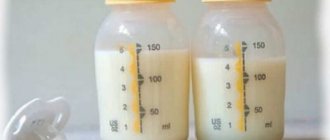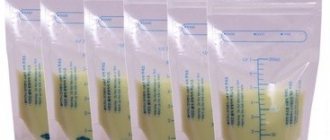The World Health Organization notes the leading role of health authorities in protecting and supporting breastfeeding.
2021 marks the 29th anniversary of the WHO/UNICEF Baby-Friendly Hospital Initiative , which is a modern, effective technology to support and increase breastfeeding rates in maternity and childhood settings.
Specifics of modern breastfeeding
There are now studies that show that babies fed breast milk have lower morbidity and mortality. They also have much fewer malocclusion pathologies and higher intelligence development compared to those who are bottle-fed or mixed-fed. This difference persists throughout life.
There are certain principles of breastfeeding to ensure optimal breastfeeding for your baby.
The first application should be carried out as quickly as possible - within the first 30 minutes of life. Early contact forms the rapid development of milk production in sufficient volume. It also enhances maternal feelings and calms after childbirth. On the part of the child, the mental relationship with the mother increases. In the first days after birth, the baby receives nutritious colostrum rich in beneficial microelements.
The frequency of attachments depends on the child’s needs and is carried out at his first request. More than 10 feedings per day is considered normal. They ensure the correct psycho-emotional connection between the baby and the mother and the preservation of lactation.
Night feedings, especially early morning feedings, are recommended to be maintained until the baby is at least six months old. In the early morning hours, the hormone prolactin, which is responsible for high-quality lactation, is produced to its maximum.
The duration of feeding is not limited. It is desirable that during one feeding the baby receives both fore and hind milk, that is, it fully satisfies its need for nutrients and microelements.
It is necessary to avoid supplementation between feedings with milk formulas and water if the volume of milk is sufficient. Thanks to this, the child’s addiction to poor nutrition is avoided. The break between feedings is on average 1-2 hours during the day, 3-4 hours at night. Over time, the baby will establish his own routine, making life easier for the mother.
According to the World Health Organization, breastfeeding is recommended to be maintained until two years of age, and later at the mutual desire of mother and child.
Correct attachment to the breast
The art of breastfeeding lies in its proper organization. All conditions must be created, since at first, feeding a newborn can last up to 5 hours a day. The mother should not experience pain or discomfort, and breastfeeding should bring only positive emotions. The quality of feeding directly depends on how correctly the attachment is performed.
The baby takes the breast correctly if:
- It captures not only the nipple, but also the areola. The lower part should not be visible;
- The baby's cheeks are retracted rather than rounded;
- The tip of the nipple reaches the baby's palate;
- The tongue rests on the lower lip;
- The baby's mouth is well open;
- The sounds of swallowing milk are heard;
If some of these rules are not followed, then perhaps the baby remains hungry, so the mother needs to consult a specialist or independently find information about the principles of breastfeeding. Sometimes the problem is flat or too small nipples, in which case special breast shields will be needed. And only in very rare cases does a mother have to express milk and bottle feed her newborn. In any case, this is correct and much better than giving an artificial mixture.
The difference between breast milk and cow's milk:
- Protein content. Breast milk contains less protein than cow's milk; fine fractions predominate in it; particles of coarse casein protein are several times smaller, which ensures that breast milk curdles in the stomach into more delicate flakes, which facilitates the digestion process.
- Breast milk proteins are similar to plasma proteins, and cow's milk proteins have pronounced antigen activity, which contributes to the occurrence of allergic reactions.
- The amino acid content in breast milk is lower, which is more optimal for the baby. Cow's milk contains three times more amino acids, which leads to protein overload, which can lead to metabolic disorders.
- Human milk, especially colostrum, released in the first three days, is very rich in immunoglobulins, especially A, which plays an important role in creating local immunity in the gastrointestinal tract of newborns. The level of lysozyme is 300 times higher than in cow's milk. It contains the antibiotic lactofelicin. Thanks to this, the infant has good immuno-biological protection.
- The amount of fat is the same, but there is an important distinguishing feature, this is the composition of the fat. Unsaturated fats predominate in breast milk. It has been proven that artificial feeding often leads to obesity.
- Carbohydrates are found in large quantities in breast milk.
- Breast milk is rich in enzymes: amylase, trypsin, lipase. Cow's milk contains hundreds of times less enzymes. This compensates for the child’s temporary low enzymatic activity and ensures the absorption of a fairly large volume of food.
- Mineral composition of breast milk: the amount of calcium and phosphorus is less than in cow's milk, but absorption is twice as good, so breast-fed children are much less likely to suffer from rickets. The content of bioelements (sodium, magnesium, iron, zinc, etc.) in breast milk is optimal and meets the baby’s needs. Breast milk contains a large amount of vitamin D, which helps prevent rickets.
Tip 1. Breast massage and compress
In the first 2 months after giving birth, I did this massage before every day feeding. We massage the left breast like this: we place our right hand under the breast, with our left we make spiral movements from the periphery to the nipple, massage gently, and work through each lobe of the breast several times. The right one is the same.
If you feel a lump somewhere under your fingers, pay special attention to this area (and be sure to let your baby suck on this breast during the next feeding). But gently without much tension or pressure
A massage for one breast lasts 5-10 minutes.
If your breasts are full and painful, massage and express a little milk, just until you feel relief.
Compress: take a cabbage leaf, make a hole for the nipple, remember a little and scald it, place the still warm leaf on the chest, cover with compress paper or cellophane (don’t forget about the hole for the nipple), on top of something warm (terry cloth, wool blend, optional ). Wear a bra. If your chest hurts, you can “wear” such a compress from feeding to feeding.
Is there enough milk?
A fairly common question that all young mothers have is whether the baby is getting enough to eat. If you bottle feed, you can control the amount, but what about breastfeeding? There are several points to pay attention to.
A newborn has enough milk if:
- He pees more than 10 times a day. To count, do not use diapers and carefully count wet diapers/rompers;
- During breastfeeding, the baby is calm, after a meal he is cheerful or falls asleep. A hungry person will be capricious and cry;
- The stool is uniform, yellow in color, and may have white spots. If there is a green tint, this may indicate lactose deficiency;
- The child is gaining weight. According to WHO principles, you should not weigh yourself more than once a week, otherwise you may get incorrect data.
These simple methods allow you to check if the baby is full and reassure the mother. If there is a suspicion that there is not enough milk, then there is no need to rush to feed the newborn with formula. Sometimes it is enough to increase the number of latch and more milk will be produced.











